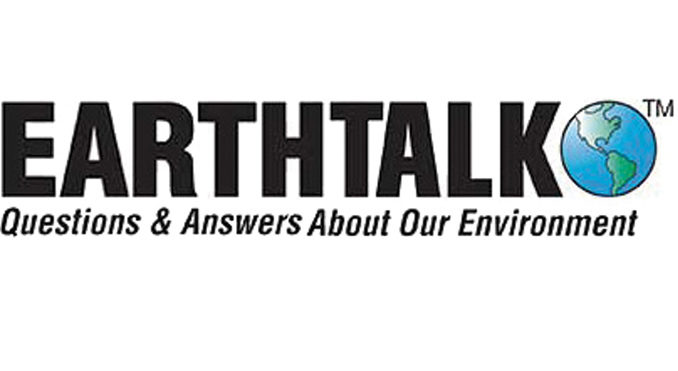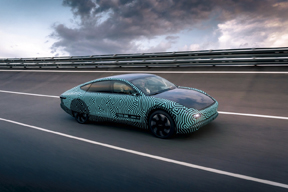
Dear EarthTalk: Is it really a good idea to burn parcels of land on purpose in order to prevent the spread of actual wildfires? ~ C. Hudson, Mesa, CA

Burning parcels of land intentionally, known as controlled burning, has long been a controversial practice aimed at reducing the risk of larger, uncontrolled wildfires. The idea is to eliminate accumulated flammable material like dead vegetation, brush and smaller trees, before it can fuel a destructive wildfire. But the effectiveness and potential drawbacks are subjects of ongoing debate among experts.
Proponents argue that controlled burns can mimic natural fire cycles, which play a vital role in maintaining ecosystem health. Fire-adapted plant species have evolved to rely on periodic burns to clear out competition, recycle nutrients and promote new growth. By reintroducing fire in a controlled manner, proponents say that we can restore ecological balance and reduce the likelihood of catastrophic wildfires. Moreover, controlled burns can help mitigate the intensity and spread of wildfires by creating firebreaks, barriers to stop or slow down an approaching fire. By removing potential fuel sources, firefighters gain a tactical advantage in managing wildfires, allowing them to better suppress and contain the flames.
However, there are valid concerns and criticisms regarding the practice of intentional burning. One key concern is the potential for controlled burns to escape control and become uncontrolled wildfires themselves. Despite meticulous planning and execution, there is always a risk of fire spreading beyond the intended boundaries, especially under unpredictable weather conditions. Furthermore, some argue that prescribed burning may have unintended consequences for biodiversity. While certain fire-adapted species benefit from controlled burns, other sensitive or non-adapted species may suffer negative impacts. This is particularly concerning in areas with high levels of biodiversity, where the loss of rare or endangered species can have far-reaching ecological consequences.
Another consideration is air quality. Controlled burns release smoke and particulate matter into the atmosphere, which can pose health risks to nearby communities, especially individuals with respiratory conditions. Although measures are taken to minimize these impacts, the scale and frequency of prescribed burns must be carefully managed to avoid significant air pollution and subsequent health issues.
Additionally, there are concerns about the long-term effects of controlled burning on carbon emissions and climate change. While controlled burns release carbon dioxide into the atmosphere, some argue that the emissions are offset by the reduction in larger, uncontrolled wildfires. However, the overall carbon balance and net effect on climate change remain complex and subject to ongoing scientific study.
Given the complexity of the issue, it is crucial to consider local conditions, scientific research, and to involve stakeholders in the decision-making process to strike a balance between preventing wildfires and minimizing potential drawbacks. If wildfires are an issue in your region, your state probably has its own “prescribed fire council”—a group of local experts on forestry and fire —that may be able to help educate otherwise skeptical neighbors, planners and city/town councils on the merits of controlled burns.
CONTACTS: Coalition of Prescribed Fire Councils, prescribedfire.net; Nearly 1 million Washington homes are at risk from wildfires; here’s why we’re not winning the fire fight, spokesman.com/stories/2020/oct/19/investigate-west-nearly-1-million-homes-at-risk-fr/.
Dear EarthTalk: Is putting out birdhouses and/or bird feeders good or bad for the local ecosystem? ~ Mary B., Bowie, MD

While putting up a bird house or bird feeder is a great way to attract birds to your property, the jury is out as to whether such attractions help or harm local biodiversity and overall ecosystem health.
On the plus side, birdhouses provide much-needed shelter for birds, especially in areas where natural nesting sites are scarce. They can also help to attract birds to your yard, which can be a fun and educational experience for children and adults alike. Bird feeders can provide a valuable source of food for birds, especially during the winter months when natural food sources are scarce. This can help to boost bird populations and reduce the risk of starvation.
However, there are also some potential downsides to providing artificial nesting and feeding sites for birds. One concern is that it can lead to overpopulation of certain bird species. When birds have an abundance of food and nesting sites, they can reproduce more quickly, which can lead to an overpopulation of their species. This can have negative consequences for the ecosystem, such as competition for food and habitat with other species.
And while hosting a birdhouse or feeder may be fun and educational, the birds you would attract aren’t the ones struggling in regard to conservation status. “The species most in trouble are seabirds, shorebirds and tropical forest dwellers,” reports Emma Greig of the Cornell Lab of Ornithology. “This means that although feeding birds may not be harmful to the species that use feeders the most, it also isn’t helpful to the species that most need our help.”
Another concern is that bird feeders can attract pests and diseases. Birds can carry diseases that can be harmful to humans, such as salmonella. They can also attract rodents, such as mice and rats, which can also carry diseases. Finally, bird feeders sometimes attract predators, such as cats, raccoons and hawks, which can prey on the birds that are attracted to the feeders, which can reduce the bird population.
Overall, whether or not putting out birdhouses and bird feeders is good or bad for the local ecosystem depends on a number of factors, such as the type of birds that are being attracted, the location of the feeders, and the overall health of the ecosystem. If you are considering putting out birdhouses or bird feeders, it’s important to do your research and make sure that you are doing it in a way that is beneficial to the birds and the environment.
For starters, choose the right type of birdhouse for the birds you want to attract, and place it in a safe and sheltered location. Also make sure it is somewhere you can access it safely as it can use regular cleanings to prevent the spread of disease. And be sure to not overfeed the birds, as you don’t want to make them dependent on your handouts for sustenance. Monitor the bird population and remove any feeders if they are attracting pests or predators or causing other problems.
CONTACTS: Analysis: Do Bird Feeders Help Or Hurt Birds? allaboutbirds.org/news/analysis-do-bird-feeders-help-or-hurt-birds/; To Feed or Not to Feed Wild Birds, fws.gov/story/feed-or-not-feed-wild-birds; Bird Feeders: Good or Bad for Wild Birds and the Environment? owlcation.com/stem/Bird-Feeders-Good-or-Bad-for-Wild-Birds-and-the-Environment.
Dear EarthTalk: Are there any electric vehicles available that can charge up using solar power (so you don’t have to plug them in to charge them)? ~ Bill Kelly, Galveston, TX

Yes, there are electric vehicles (EVs) available that can be charged using solar power. Often referred to as solar-powered EVs or solar-charging EVs, these vehicles integrate solar panels into their design to harness solar energy and convert it to electricity for the vehicle’s batteries. Solar charging alone may not be enough to power an EV completely, but it can provide additional power and extend the vehicle’s range.
Solar-powered EVs use photovoltaic (PV) cells, which are typically installed on the roof or other parts of he vehicle’s body. These cells capture sunlight and convert it into electricity through the photovoltaic effect. The generated electricity is then used to charge the EV’s battery pack or supplement its power requirements, reducing the reliance on grid electricity.
One example of a solar-powered EV is the Lightyear One, developed by a Dutch company called Lightyear. This EV is equipped with solar panels integrated into its roof and hood. Its solar panels are highly efficient, enabling them to charge the vehicle’s battery while it is parked or in motion. The company claims that the solar panels can provide up to 12 kilometers (7.5 miles) of range per hour of solar charging, depending on weather conditions.
Another notable example is the Sono Sion, an EV developed by a German startup called Sono Motors. The Sion is covered with solar panels that can generate electricity to charge the vehicle’s battery. The car also features bidirectional charging, allowing it to share its excess energy with other devices or even power another EV. The Sono Sion’s solar panels are expected to provide approximately 30 kilometers (18.6 miles) of additional range per day through solar charging, according to the company.
It’s worth noting that the efficiency and range added by solar charging depend on various factors such as the size of the solar panels, the weather conditions, the amount of sunlight available and the energy requirements of the vehicle. While solar charging can be a convenient and eco-friendly way to extend the range of an EV, it is not intended to replace traditional charging methods entirely.
In addition to solar-powered EVs, there are also aftermarket solutions available for existing electric vehicles. These solutions involve retrofitting solar panels onto the roofs or other parts of the vehicle to enable solar charging. These aftermarket options may not provide as seamless an integration as purpose-built solar-powered EVs, they can still offer an opportunity to harness solar energy and reduce the reliance on grid electricity.
Solar-powered EVs and solar charging technologies are continually evolving as researchers and manufacturers explore ways to improve efficiency and integration. The combination of renewable energy generation through solar power and the increasing adoption of electric vehicles represents a promising step towards a sustainable and clean transportation future.
CONTACTS: Lightyear One, lightyear.one; The Sono Sion Solar Car Is Coming to the US, Here’s What It Will Do, cnet.com/roadshow/news/the-sono-sion-solar-car-is-coming-to-the-us-heres-what-it-will-do; Why solar electric vehicles might be the next generation of EVs, cnbc.com/2022/11/22/how-sono-aptera-and-lightyear-are-making-solar-powered-evs-a-reality.html.
EarthTalk® is produced by Roddy Scheer & Doug Moss for the 501(c)3 nonprofit EarthTalk.
See more at https://emagazine.com. To donate, visit https//earthtalk.org.
Send questions to: question@earthtalk.org.

